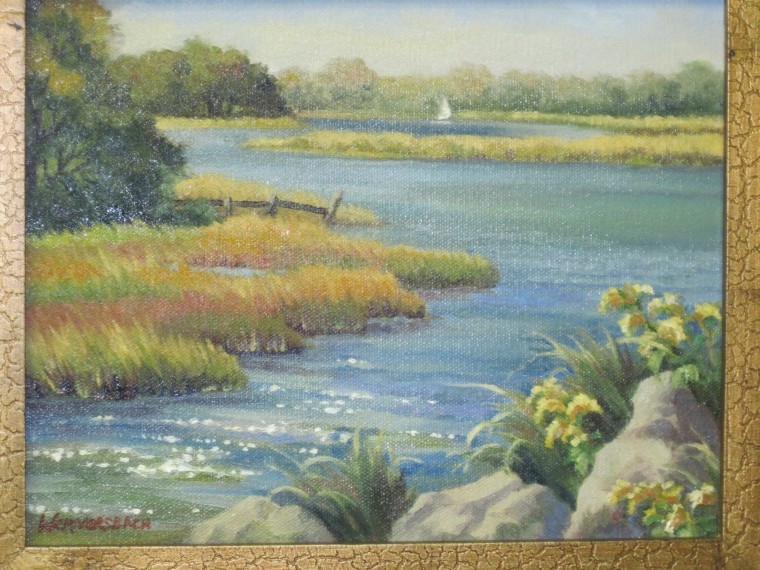A current exhibit of plein air paintings by members of The Art League of Nassau County in the all-purpose building at Clinton G. Martin park provides a selection of finely rendered examples of that school of painting which has its origins in Impressionism.
For the 19th century European impressionist painters and American realistic painters such as Winslow Homer, the plein air approach attempted to capture a moment in nature in a landscape or other subjects. The idea is for an artist to become immersed in the environment, and execute a painting on the spot in an outdoor setting. The portability of easels in the late 19th century made the approach possible, and the contemporary artists of the Art League of Nassau County pursue the practive as a group on a regular basis.
“What you see is real and you have to do it two hours, in tops three, before the lights change,” said Carol Bruder, president of the Art League.
“The object is to capture the atmosphere, and it’s usually more emotional because it’s more spontaneous.”
Early impressionist painters practicing the technique would often return to the same spot at the same time of day for a few days at a time to capture the same lighting conditions.
Members of the county Art League typically go on planned excursions twice monthly during the summer months to practice plein air techniques, according to Bruder, who said in some cases the painters will get the basic “statement” of the painting on canvas and finish the rest at home.
Because of the objective to finish a piece quickly, most of the works in the exhibition mounted in the main activity room at Clinton G. Martin and in one hallway are relatively small renderings. But what they lack in size, the more than make up for in content.
Nancy Fabrizio’s “Connetquot River View” presents an image of the river in greyish blue irridescent tones, with foliage from the trees on the river bank reflected in the water, and seemingly, as part of it. Fabrizio, who lives in Floral Park, also has a work called “Sunflowers at the Winery,” in which the sunflowers are really points of color on the canvas with lavender flowers as a counterpoint in the foreground. A winery building in the background lends the piece perspective.
Nancy Wernersbach’s “Stony Brook Marsh” shows a stream of blue-green water snaking through the canvas, surrounded by marsh grass and other vegetation. The windblown marsh grass lends an immersive feeling to the viewer and the way the water recedes into the distance draws the onlooker into the painting.
In Bruder’s own “Inlet at Stony Brook” is another prime example of the plein air approach, as the water and the reeds surrounding it in the inlet seem to merge as one in the small image.
Among the most striking pieces in the exhibit is “A Pond in the Park” by Thomas Geyer, notable partly because of its unusually large size. But Geyer has succeeded in giving a novel presentation of the Central Park duck pond near the corner of 59th Street and 5th Avenue in Manhattan. The skyscrapers just outside the park are reflected in the pond, which has ducks painted as white streaks, which lend the pond the feeling of being some kind of living organism, like a giant alligator.
The recently mounted Art League of Nassau County exhibit will be on display through the end of January. There is no charge to view it.
Those interested in getting involved with the Art League can attend its next meeting in the Clinton G. Martin building on Jan. 28 at 7:30. A demonstrator session, featuring one of the league’s members giving a brief primer on painting techniques, will be part of the meeting.
The Art League has a new exhibition coming up at the Jericho Library, opening on Feb. 2 and continuing through Feb. 27. A reception with the artsts will be held on Feb. 5.
For further information, visit the organization’s web site at www.artleagueofnc.org.



